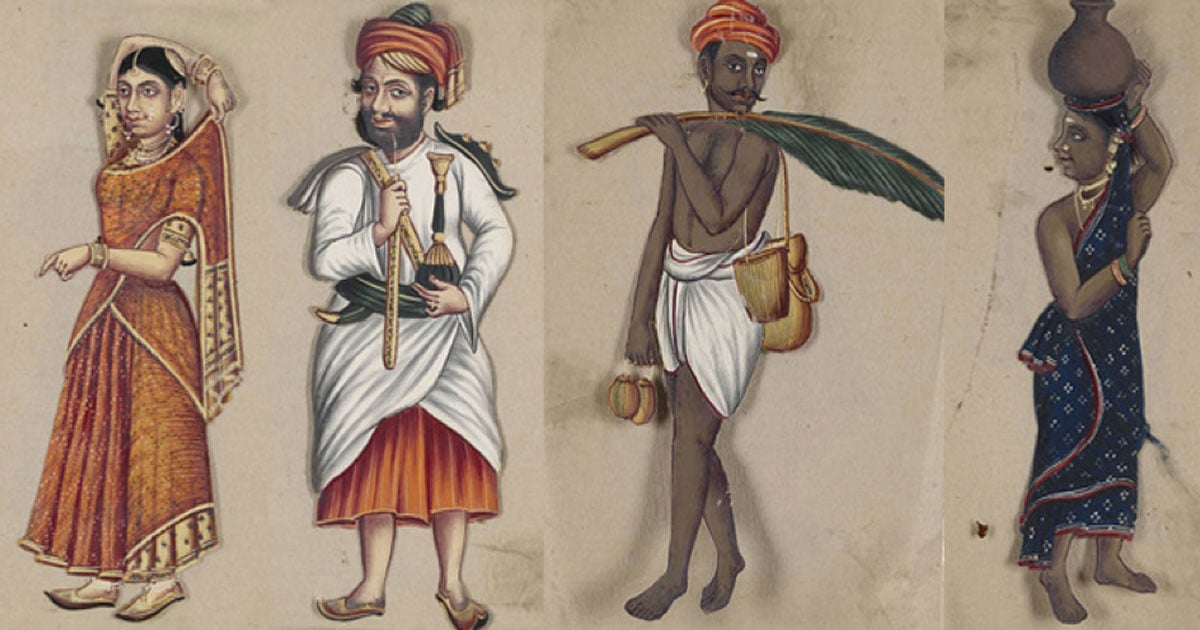The Controversial Indian Caste System Has Been Dividing India for 2000 Years
A study of genetic populations in India suggests the Indian caste system, a traditional method of social organization into a hierarchy of hereditary groups, has been prevalent in the South Asian society for about 2000 years.
As an overview: the caste system is based on Hindu religious principles and dictates how different groups of people can interact. This hierarchical organization of society only permits marriage within the same caste and dictates that a caste is fixed from birth. Moreover, each caste is linked to a traditional occupation.

A 1922 stereograph of Hindu children of high caste, Bombay, India. (Public Domain)
Live Science reported that researchers analyzed the DNA of 371 people from 73 groups and reported their findings in the American Journal of Human Genetics. The researchers discovered that different populations began to intermix in India about 4200 years ago, but stopped intermingling approximately 1900 years ago. These results were supported by clues found in ancient texts which suggest class distinctions have existed since about 3000-3500 years ago. Caste divisions became strong approximately two millennia ago.
- The Rise of Chandragupta Maurya, and the Golden Age of the Mauryan Empire
- Modern Hindus Forbidden From Eating Beef But Ancient Hindus Ate the Sacred Cow
- Manikarnika Ghat and the Role of Cremation in Traditional Indian Funerary Rites

An 1860s photograph of Rajputs, classified as a high Hindu caste. (Public Domain)
Three principal groups of people – priests, nobility, and common people – were identified in the 3500-year-old collection of Sanskrit hymns known as the Rigveda. This source doesn’t mention segregation or restrictions on employment areas at that time. A fourth group, called the Shudra (the lowest class), was mentioned by 1000 BC. Nonetheless, it wasn’t until 100 BC that the holy text Manusmruti mentioned direct prohibition of marriages across castes. This restriction reflects the results of the genetic analysis.
Study co-author Priya Moorjani, a geneticist at Harvard University, explained that although relationships across castes was once common, a "transformation where most groups now practice endogamy [where people marry within their own group]" occurred about 2000 years ago.
- The Birth of Arthashastra: Ancient Handbook of Science of Politics in India, and Those Who Wielded It
- Why Judging a Person by Their Skin Colour Defies Logic
- Incredible Megaliths of India: Star Maps and Headless Goddesses – Part I
The caste system is linked to a Hindu belief in the four varnas - ordering and ranking people by their “innate” spiritual purity. At the highest position are the priests, Brahmins. The warriors, Kshatriyas, are next and the Vaishyas, merchants, follow them. The lowest caste belongs to Shurdas (laborers, artisans, and servants doing ritually “unclean” work.) The Shudra caste was once known as the “untouchables” and they were heavily discriminated against – being unable to drink from wells used by higher castes, participate in religious rituals, or even have their shadows fall on Brahmins.

Pyramid of Caste system in India. (CC BY SA 3.0)
By the early 20th century India was on its way to independence from the British and the caste system became very controversial. It has been criticized as unfair and discriminatory. Now, the Indian constitution prohibits the use of “untouchable” to describe members of the Shudra caste or discrimination based on caste. With the increase of the information age, the caste system has lost much of its economic importance. However, it remains important to religious practices and continues to be a divisive area of life in India today.

Gandhi visiting Madras (now Chennai) in 1933 on an India-wide tour for Harijan causes. His speeches and writings during these tours discussed the discriminated castes of India. (Public Domain)
Top Image: Images from the manuscript ‘Seventy-Two Specimens of Castes in India.’ (Public Domain & Public Domain)


















Comments
G'day April et al.,
An amazing site, thanks on behalf of one and all.
I have been reading up on many of the topics you cover for decades, but in every case you have had new info and insights.
Will ramble a bit, next.
Have you ever compared the step pyramids of Egypt, Mesopotamia and Central and South America. They are so close they had to have the same original architect. I think the intro to the Americas was about 2,000 BC, with the vessels going, well, which way? Benin warriors later crossed, an easy trip for big sailing canoes, see the Olmec statues, but there is also a very close match in dress styles, between the people of Nepal and Tibet, and those of the Peruvian mountains. I once experienced the hospitality of a family of Pyallup Indians, when hitching past Tacoma, and they said, they have been offering such hospitality for a very long time. It was, I took it, a very serious statement. Most human exploration has been by canoe, as those, for crossing rivers, are simply logs with some branches knocked off, so Homo erectus had the tools and the need. I have watched a fox use a log in a river to cross it, here in Oz. Trees being undercut and falling into and across rivers explains back a fair bit further, to the brontosaurus - a canoe, with flippers to haul it over obstructing trees blocking rivers, and a long tail to balance the long neck it had for getting deeper and deeper river mussels. So there were always logs for riverine monkeys.
We westerners are newcomers to exploration, as the Negritos extend from the tip of South America to the Andamans, to Tasmania. Their oldest legends say they knew Australia was here, because the birds told the. Huge flocks, going south, with their needs well understood.